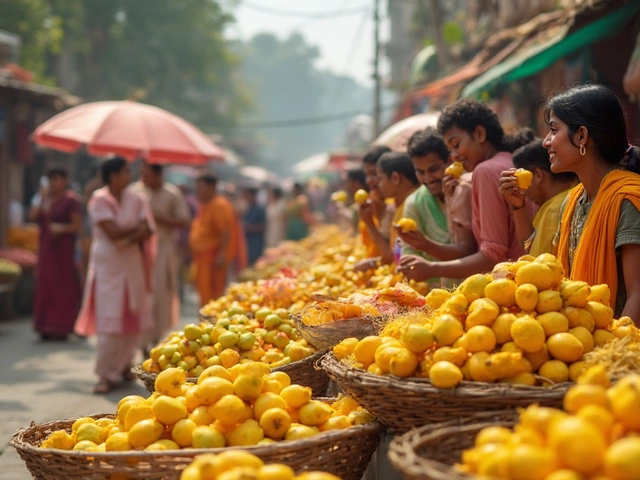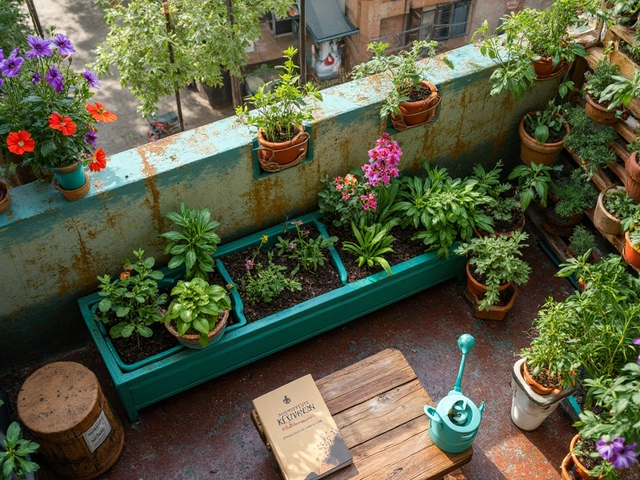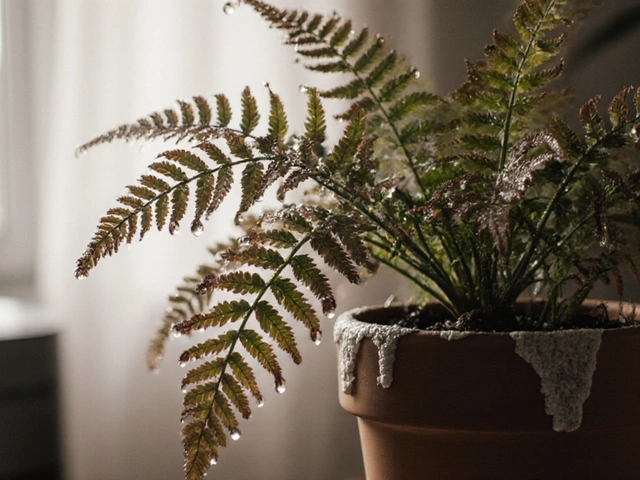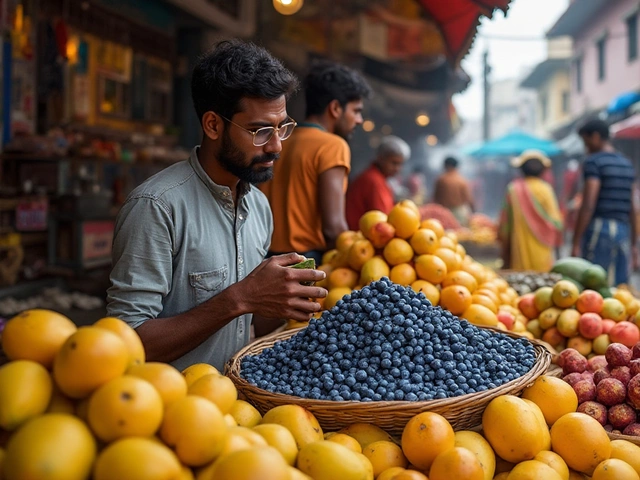You probably don't have to look far to spot the lotus when you think about India. Just picture the old coins, temple carvings, or even those bright festival decorations. This flower pops up just about everywhere. Most countries have flowers that catch your eye, but in India, the lotus doesn't just get noticed—it’s worshipped, cherished, and always in the spotlight. It isn't only a pretty face, either; it’s deep-rooted in India’s culture, stories, and even politics. So why does the lotus win the number one spot? Let's dig into how and why the lotus became India's top flower and won hearts over time.
The Rise of the Lotus: Beauty and Power Across Centuries
The oldest Indian legends will tell you that the lotus has been there since day one. Need proof? Think of the Hindu deities—Lakshmi, the goddess of wealth, sits on a blooming pink lotus. Vishnu, one of the heavyweights among gods, is shown with a lotus sprouting from his navel, with Brahma perched on top. The flower also finds a place in Buddhist and Jain philosophies, representing spiritual growth. In Buddhist art, Buddha is often shown on a lotus, symbolizing his rise above the muddy waters of suffering. You might think this is just mythological fanfare, but the flower’s image is everywhere. From ancient coins and carvings in Ajanta caves, to the 21st-century Indian currency notes—everywhere you look, you’ll spot the lotus.
Even outside temples, the lotus claims top-dog status. India declared it the national flower back in 1950. And it’s no wonder. Unlike roses or marigolds, the lotus stands out for another reason—its knack for thriving in muddy, still waters, yet rising up spotlessly clean. It’s no accident the phrase, "to live like a lotus in water" pops up in Indian proverbs. For centuries, poets have swooned over this flower, likening its resilience and beauty to enduring tough times. And politicians haven’t let this go unnoticed. The lotus is now the symbol for the Bharatiya Janata Party (BJP), one of India's main political players. So whether you’re looking at history, religion, or modern-day politics, the lotus steals the limelight, hands down.
The flower’s journey through time tells an even bigger story. Archaeologists dug up ancient terracotta seals from the Indus Valley Civilization (3000 BCE) with lotus carvings. Greek visitors like Megasthenes described seeing stunning ponds filled with lotus blooms when he toured Indian palaces centuries ago. It’s even in the earliest Sanskrit texts, like the Rigveda. Artists have borrowed the lotus's shape, style, and mystique for temple columns, jewelry designs, and even the architectural marvels like the Lotus Temple in Delhi. Clearly, it’s not just a flower—it's a living emblem of India’s story, stitched through every chapter of culture and change.
Gardening the Lotus: Everything You Need to Know
So, you’re thinking about growing your own lotus? Good news: it’s easier than most people think, even if you haven’t got a giant lake in your backyard. The first step is picking the right variety. Lotus comes in two main types: Nelumbo nucifera (the Asian or sacred lotus, which is India’s pride) and Nelumbo lutea (the yellow American kind, more famous across the other hemisphere). For home gardens, most go for Nelumbo nucifera, known for those dazzling pink or white blooms.
Unlike regular flowers, the lotus calls for a different game plan. You’ll need a big container—think water tub, half-barrel, or even an old bathtub. Fill about three-quarters with rich, loamy soil, but skip anything heavy on peat moss, which tends to float and make a mess. Plant lotus tubers horizontally, just under the muddy surface. Now, here’s the secret: add enough clean water so there’s around 15 cm above the soil. Place the tub out in full sun. Lotuses love soaking up sunshine for at least six hours a day. If you try to grow them in the shade, you’ll just end up with big leaves and zero blooms. Trust me—my first attempt in the Auckland winter backyard was a flop until I moved our tub for full sun in October.
During summer, the lotus may bloom like wild, tossing out flowers that last for three days each. Each plant can flower multiple times, giving you color well into autumn. Keep the water topped up. If algae start showing up, toss in a couple of barley straw pellets or a handful of submerged oxygenating plants (like hornwort); they'll keep the water clear without hurting the lotus. And, believe it or not, these flowers aren’t just pretty. The tubers and seeds are edible and packed with nutrients. Across India, ‘kamal kakdi’ or lotus stems are cooked in curries. The seeds, called foxnuts or makhana, are crispy snacks that folk swear help with insomnia and diabetes.
The Lotus in Indian Life: Festivals, Rituals, Everyday Wonders
No big festival or ceremony in India feels complete without lotus flowers. Every October and November, during Diwali, families float lotus petals in bowls with oil lamps to invite Lakshmi, the goddess of good fortune. In South India, ponds are stocked just to harvest enough lotus blooms for temple offerings day after day. And during Navaratri, homes set up elaborate ‘kolams’ (floral rangoli designs) with petals and leaves. There isn’t a state in India where lotus isn’t popular during wedding rituals, either. Couples in Kerala and Tamil Nadu exchange garlands featuring lotus, believing it will bless them with purity and resilience in marriage.
The lotus isn’t just a ceremonial prop, though. It’s practical, too. Craftspeople in Assam and Manipur extract lotus fiber to weave rare luxury fabrics, sometimes called ‘lotus silk.’ It takes thousands of stems to create a scarf, making it more valuable than conventional silk. Ayurveda, India’s ancient healing science, prescribes lotus extracts for everything from nosebleeds to skin infections to heatstroke. Even cosmetic companies have jumped in, making face creams and teas infused with lotus antioxidants.
If you’re in a big Indian city during monsoon, you’ll spot roadside flower-sellers with stacks of lotus buds, ready for early morning temple goers. Or catch a wedding and you’ll see decorative ponds brimming with lotus. It isn’t rare for people in rural areas to snack on the roasted seeds while chatting at roadside tea stalls. The sheer range—from sacred ceremonies to local snacks—sets the lotus apart from other flowers. There's a reason why no other bloom has quite the same reach into every corner of Indian life.
Comparing the Lotus: Why Not the Rose, Marigold, or Jasmine?
You might wonder, with so many beautiful flowers in India, why does the lotus pull ahead? Marigolds (genda) are everywhere during festivals and weddings, draping garlands or wrapped around pillars. Jasmine (mogra) perfumes homes and hair all summer. Roses, in shades from deep red to white, find their way into every temple and market. But what makes the lotus unbeatable is the combo of meaning, resilience, and how it wins over hearts across all lines—religion, region, and era.
If you look at stats on flower production, marigold leads for sheer quantity—over 60% of commercial flower farming in India is dedicated to marigold. Roses clock in at about 20%. Jasmine dominates the south, where it’s worn for fragrance rather than looks. The lotus, on the other hand, isn't farmed on the same mega-scale, since it’s tougher to harvest and care for. Wild and cultivated ponds alike are seen as sacred, not fields made for cutting stems by the dozen. Plus, marigold and roses wilt quickly; the lotus, floating in water, remains crisp and beautiful for days. This gives it an edge for temple and ceremony use.
| Flower | Percent of Indian Flower Farming | Main Uses | Cultural Value |
|---|---|---|---|
| Marigold | 60% | Weddings, festivals, garlands | High (Hindu festivals/worship) |
| Rose | 20% | Decor, prayer, perfumery | Medium (widely popular, less symbolic) |
| Jasmine | 10% | Fragrance, temple offerings | High in southern states |
| Lotus | Small | Rituals, religious, artistic, food | Unmatched—spiritual, national symbol |
So sure, the rose or jasmine might win in numbers. But ask anyone for the flower that defines India—north, south, east, or west—and the answer still comes back to the lotus, like a reflex.
Tips for Growing Lotus at Home—Anywhere You Live
If you’re keen to bring this national pride to your own patch, whether you live in Delhi or, like me, as far away as Auckland, here’s what helps the most. Start with viable tubers or healthy seeds. You can order these online or get them from a garden center that stocks aquatic plants. Remember, patience is key: lotus from seed will take about a year to flower, but tubers can bloom the same summer if conditions are right.
Keep the water in your lotus tub at roughly the same temperature as the air—too cold and the lotuses slow down, too hot and they go dormant. Lotus plants also need feeding. Use a slow-release aquatic fertilizer; push tablets into the mud near the tuber every month during the growing season. Skip the miracle-gro type stuff, which can poison the pond and kill your fish if you keep any in the tub.
Watch out for pests like aphids or caterpillars. Most will settle on the massive leaves. You can blast them off with a hard jet of water or drop a bit of neem oil (eco-friendly and commonly used in India) around the leaves. Trim dead leaves and faded blooms—this keeps things tidy and gives new growth plenty of energy. When winter hits, your plant may look like it's dying back but don’t panic. Just move the container to a frost-free spot, cut back on watering, and wait—new shoots appear again once the days warm up.
And if all this sounds like a lot, don’t be put off. The thrill of those first pink blooms rising from muddy water? It’s worth every bit of effort, trust me. Even Liana, who’s usually not fussed about flowers, said our little lotus in Auckland made her feel more connected to India than any chai or Bollywood movie night ever could. That’s the special pull of the lotus—no matter where you are, it makes home feel just a bit closer.




